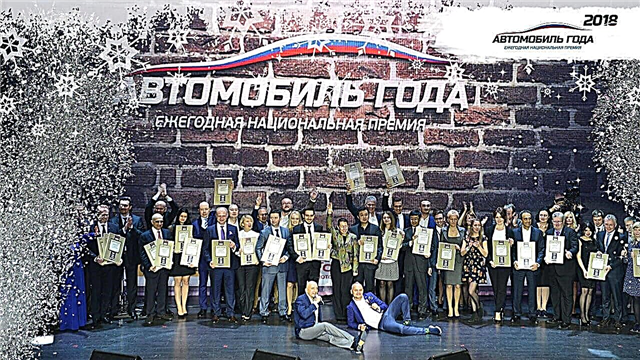Humanity has never reached Mars, a cure for all diseases has not yet been invented, cars do not fly, but, nevertheless, there are areas in which people have reached unprecedented heights. The computing power of computers is one such.
To begin with, we will figure out what is the key parameter in evaluating this characteristic of supercomputers. Flops - a value indicating the number of floating point operations that a computer can perform in a second. Based on this indicator, our rating of the most powerful computers in the world was compiled, according to 2019.
The rating was presented at the International Supercomputing Conference, the top 500 supercomputers were compiled by mathematicians and scientists at the Lawrence National Laboratory and the University of Tennessee.
10. Trinity - performance 8.1 Pflop / s
 This supercomputer is on guard of US military security, supporting the effectiveness of the national nuclear arsenal. Given this, one might think that this device is incredibly expensive, however, starting in 2015, it began to be replaced by new, more powerful supercomputers. Trinity operates on the basis of the Cray XC40 system, its performance is 8.1 Pflops / sec.
This supercomputer is on guard of US military security, supporting the effectiveness of the national nuclear arsenal. Given this, one might think that this device is incredibly expensive, however, starting in 2015, it began to be replaced by new, more powerful supercomputers. Trinity operates on the basis of the Cray XC40 system, its performance is 8.1 Pflops / sec.
9. Mira - 8.6 Pflops / sec
 Mira is another Cray brilliant product. It is worth noting that the design of this supercomputer was developed by order of the United States Department of Energy. The main field of application of Mira is state industrial and research projects. The computing power of this computer is 8.6 petaflops per second.
Mira is another Cray brilliant product. It is worth noting that the design of this supercomputer was developed by order of the United States Department of Energy. The main field of application of Mira is state industrial and research projects. The computing power of this computer is 8.6 petaflops per second.
8. K Computer - 10.5 Pflops / sec
 The peculiarity of this supercomputer lies in its name, which comes from the Japanese word "kei" and means 10 quadrillion. Approximately this figure rests on the production capacity of K Computer - 10.5 petaflops. The specificity of this technique also lies in the fact that the system uses water cooling, which can significantly reduce energy consumption and reduce the layout speed.
The peculiarity of this supercomputer lies in its name, which comes from the Japanese word "kei" and means 10 quadrillion. Approximately this figure rests on the production capacity of K Computer - 10.5 petaflops. The specificity of this technique also lies in the fact that the system uses water cooling, which can significantly reduce energy consumption and reduce the layout speed.
7. Oakforest-Pacs - 13.6 Pflops / sec
 The Japanese company Fujitsu, which was also involved in the development of K Computer, which was mentioned earlier, created a new generation supercomputer (the Knights Landing generation). The project was commissioned by Tokyo and Tsukuba universities. Despite the fact that it was originally planned to equip the computer with 900 TB memory and a performance of 25 quadrillion operations, its computing power is 13.6 petaflops / s.
The Japanese company Fujitsu, which was also involved in the development of K Computer, which was mentioned earlier, created a new generation supercomputer (the Knights Landing generation). The project was commissioned by Tokyo and Tsukuba universities. Despite the fact that it was originally planned to equip the computer with 900 TB memory and a performance of 25 quadrillion operations, its computing power is 13.6 petaflops / s.
6. Cori - 14 Pflops / sec
 Until 2017, Cori held a firm 5th position in the world ranking of the most powerful computers, but in the conditions of rapidly developing technological progress, it nevertheless lost one rating line to the latest supercomputers. It is located in the Lawrence and Berkeley National Laboratory, in the USA. Cori has already made a unique contribution to the development of science: with its help, Swiss scientists were able to simulate a 45-qubit quantum computing system. 14 petaflops is the productive capacity of this "supercar".
Until 2017, Cori held a firm 5th position in the world ranking of the most powerful computers, but in the conditions of rapidly developing technological progress, it nevertheless lost one rating line to the latest supercomputers. It is located in the Lawrence and Berkeley National Laboratory, in the USA. Cori has already made a unique contribution to the development of science: with its help, Swiss scientists were able to simulate a 45-qubit quantum computing system. 14 petaflops is the productive capacity of this "supercar".
5. Sequoia - 17.2 Petaflops
 Many experts call Sequoia the fastest supercomputer in the world, and for good reason: its arithmetic performance is equal to the speed of 6.7 billion people who would carry out an identical task with calculators for 320 years. Sequoia differs in its size: the computer covers an area of 390 square meters and consists of 96 racks. 17.2 petaflops - its performance, which equals almost sixteen thousand trillion operations.
Many experts call Sequoia the fastest supercomputer in the world, and for good reason: its arithmetic performance is equal to the speed of 6.7 billion people who would carry out an identical task with calculators for 320 years. Sequoia differs in its size: the computer covers an area of 390 square meters and consists of 96 racks. 17.2 petaflops - its performance, which equals almost sixteen thousand trillion operations.
4. Titan - 17.6 Pflops / sec
 In addition to being one of the top fastest computers in the world, Titan is also considered one of the most energy-efficient, with a rate of 2142.77 megaflops per watt of energy consumption. The secret to saving energy is to use Nvidia accelerators, which provide up to 90% of all the computing power, which, by the way, is 17.6 petaflops. Thanks to them, Titan significantly reduced its dimensions - now it only takes 404 square meters to accommodate it.
In addition to being one of the top fastest computers in the world, Titan is also considered one of the most energy-efficient, with a rate of 2142.77 megaflops per watt of energy consumption. The secret to saving energy is to use Nvidia accelerators, which provide up to 90% of all the computing power, which, by the way, is 17.6 petaflops. Thanks to them, Titan significantly reduced its dimensions - now it only takes 404 square meters to accommodate it.
3. Piz Daint - 19.6 Petaflops
 The Piz Daint supercomputer project was launched back in 2013, in the Swiss city of Lugano. It is located there - in the Swiss National Center for Supercomputers. Piz Daint has collected almost all the positive characteristics of the above analogues, including energy efficiency and high speed, except for compactness: the device consists of 28 large racks. Its computing power is 19.6 petaflops.
The Piz Daint supercomputer project was launched back in 2013, in the Swiss city of Lugano. It is located there - in the Swiss National Center for Supercomputers. Piz Daint has collected almost all the positive characteristics of the above analogues, including energy efficiency and high speed, except for compactness: the device consists of 28 large racks. Its computing power is 19.6 petaflops.
2. Tianhe-2 - 33.9 Petaflops
 The supercomputer with the romantic name "Milky Way" (translated from Chinese) until June 2016 headed the top 500 most powerful computers in the world. Its power provides a speed of 2507 trillion operations per second, which equals 33.9 petaflops. Tianhe-2 found its "calling" in the field of construction: in the calculation of buildings and road construction. It is worth noting that since the beginning of 2013, as soon as the Milky Way was released, it did not leave the leading position in the ratings, which is a really powerful indicator.
The supercomputer with the romantic name "Milky Way" (translated from Chinese) until June 2016 headed the top 500 most powerful computers in the world. Its power provides a speed of 2507 trillion operations per second, which equals 33.9 petaflops. Tianhe-2 found its "calling" in the field of construction: in the calculation of buildings and road construction. It is worth noting that since the beginning of 2013, as soon as the Milky Way was released, it did not leave the leading position in the ratings, which is a really powerful indicator.
1. Sunway TaihuLight - 93 Petaflops
 Inside this computer are 40,960 production processors, which explains its overall size: Sunway itself covers an area of about 1000 square meters. At the 2016 international conference in Germany, he was recognized as the fastest of its kind. To date, Sunway TaihuLight is the first in the ranking and the only one in the top 10 supercomputers capable of producing speeds of 93 petaflops.
Inside this computer are 40,960 production processors, which explains its overall size: Sunway itself covers an area of about 1000 square meters. At the 2016 international conference in Germany, he was recognized as the fastest of its kind. To date, Sunway TaihuLight is the first in the ranking and the only one in the top 10 supercomputers capable of producing speeds of 93 petaflops.

The most productive supercomputer in Russia
 Sberbank together with SberCloud on November 8, 2019 introduced the most powerful supercomputer in Russia - Christofari. It was named in honor of the first client of the Savings Bank Nikolai Christofari.
Sberbank together with SberCloud on November 8, 2019 introduced the most powerful supercomputer in Russia - Christofari. It was named in honor of the first client of the Savings Bank Nikolai Christofari.
The American company NVIDIA took part in the development of the computer. It is expected that its capabilities will be used to create services and processes related to artificial intelligence.
Supercomputer Performance Declared Level 6.7 petaflops. Estimated development cost was $ 12- $ 15 million.
If we consider technological progress in terms of its impact on man, society as a whole and the environment, it is obvious that it has global shortcomings. Today we have access to a great variety of computers, various devices and robots. But the highest goal is to find worthy application to the great inventions of mankind and direct their use for the benefit of our common future, without turning them into meaningless toys.












